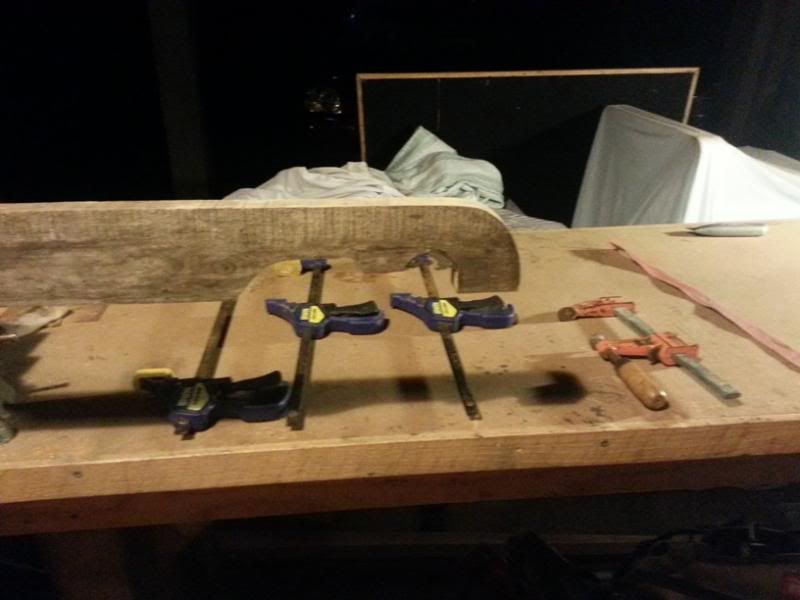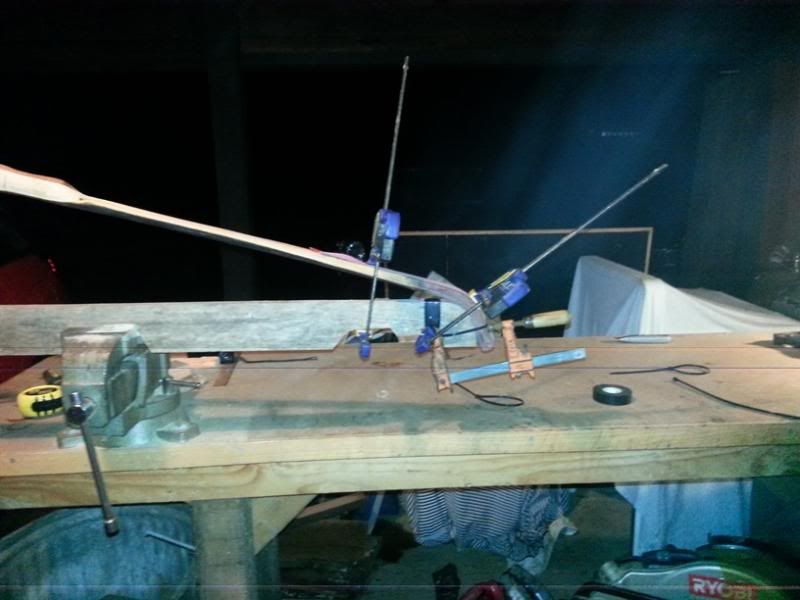Next step is to prepare my caul to bend in the recurves. As I mentioned I'm shooting for a gentle recurve, but I decided to use my static form and only bend the bow half way. (this is partly laziness since my other form recently broke and I haven't built a new one yet).

I hold my caul in my bench vice to keep the working process off the bench. I notice having the caul in the vice helps to avoid interference while you're making the bend. Nothing worse than getting 1/2 a bend and running into something on your bench uhg. Not that that's ever happened to me

).

Since I'm self photographing here, I can't show the process of taking the bow out of the water, putting it on the caul and getting the bend. It helps to do a lot of dry runs and practice timing yourself. I generally want to get everything in place and achieve the bend in 60 seconds or less. If you take to long and the wood cools you run the risk if excessive splitting. I use two tricks when I working by myself. The first is a zip tie to hold the bow in place while I prepare the clamps. Its like an extra hand. I also tape a long strap to my caul which runs around the back of the bow and onto the belly over the bend. This helps avoid lifting splinters. Although I still get splinters sometimes. That's one reason you leave a little extra material on the tips (both thickness and width).
Here's the stave in the caul. Notice the zip tie on the bottom of the caul (easy to tighten with 1 hand while you hold the bow). Also the electrical taped strap.


As you can see I only achieved about 2/3 of the total bend that I would have used if I was going for a classic static. I did this assuming that i would get about 25% spring back as well.

Gabe